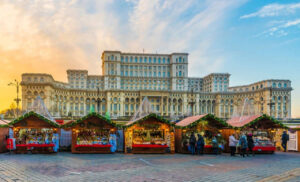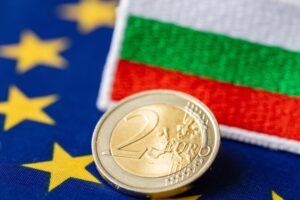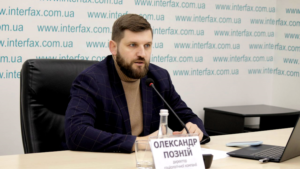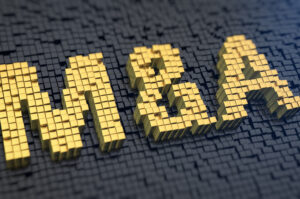
The Bucharest authorities plan to introduce a tourist tax of €2 per night for each visitor to the city from 2026.
The tax will be levied on tourists staying in hotels and hostels, as well as in apartments rented through booking platforms, including Booking and Airbnb.
According to city hall estimates, revenue from the new tax could reach 15 million lei per year. The funds raised are planned to be used to develop tourist infrastructure, promote Bucharest as a tourist destination, and improve services for visitors to the city.

Romanian border guards are not allowing many cars arriving from Ukraine to cross the border without proof of technical inspection, according to eyewitnesses.
To cross the border, drivers are required to present a technical inspection certificate confirming that the vehicle is in good working order. It is also necessary to have documents for entry and travel, including passport documents, car papers, and insurance, and in some cases, confirmation of the purpose of the trip and a power of attorney when driving someone else’s car.
The Romanian border police previously indicated that during border control, drivers must present an identity document, a valid driver’s license, vehicle registration documents, and confirmation of a valid periodic technical inspection, which must be valid at the time of presentation at the checkpoint.
In addition, border guards remind travelers that customs restrictions on entry into Romania apply to meat and dairy products, honey, and cash in excess of €10,000, which must be declared.

The Ukrainian Defense Industry Joint Stock Company announces the selection of candidates for positions as independent members of the supervisory boards of six key enterprises, according to the Ministry of Defense of Ukraine.
“Ukrainian Defense Industry Joint Stock Company announces the selection of candidates for the positions of independent members of the Supervisory Boards of six key enterprises in the following areas: Aircraft manufacturing; Production of radar equipment; Production of ammunition and special chemicals; Transport vehicle manufacturing; Armored vehicle manufacturing; Shipbuilding,” according to a statement on the ministry’s Telegram channel.
It is noted that Ukroboronprom seeks to ensure the formation of professional supervisory boards that will promote long-term sustainable development, transparency, efficiency, and control over the management of defense industry enterprises in accordance with the principles of corporate governance and best international practices.
“Therefore, we are starting to search for candidates for the positions of independent members of supervisory boards with experience in the following areas: corporate governance; human resources management; science-intensive machine building,” the Ministry of Defense informs.
Details about current vacancies and qualification requirements for candidates can be found on the official website of Ukroboronprom in the “Career” section. Documents for participation in the selection process (detailed CV of the candidate) will be accepted until December 31, 2025, inclusive.

In Bulgaria, amid the transition to the euro, some of the population remain concerned about possible price increases and heightened political tensions, according to media reports.
The country will join the eurozone on January 1, 2026, becoming the 21st country to adopt the single European currency.
There are also reports of a protest campaign under the slogan of preserving the Bulgarian lev, and according to Eurobarometer, about 49% of Bulgarians oppose the introduction of the euro.
The article notes that the ECB and European institutions point to the potential benefits of the transition, and the fixed conversion rate is set at 1.95583 leva per euro.
At the same time, according to media reports, the Bulgarian parliament strengthened control mechanisms in the summer to stop unjustified price increases when the currency changes.
Possible scenarios for the rise in the cost of living due to the introduction of the euro: the mildest scenario is a short-term “rounding” effect in retail trade, when some prices are rounded up, which usually contributes slightly and temporarily to inflation.
A more severe scenario is attempts by individual sellers and services to take advantage of the transition period and raise prices more than the conversion dictates, against the backdrop of already noticeable increases in the cost of food and real estate in 2025.
A negative scenario for citizens is if the rise in prices in the consumer basket outpaces the indexation of wages and pensions, real purchasing power will temporarily decline even with a formally small increase in inflation.

At the end of 2025, 56.2% of Ukrainians believe that the country is moving exclusively or predominantly in the right direction, while 30.6% assess this movement as wrong, according to the results of a nationwide sociological survey by Active Group, presented at a press conference at Interfax-Ukraine on Monday.
According to the published data, among Ukraine’s main achievements since the start of the full-scale invasion, respondents most often cited the attraction of international aid (61.4%). Respondents also noted the organization of the country’s defense (43.1%), the unification of society around support for defenders (32.8%), and the development of the domestic defense industry (32.6%).
At the same time, Ukrainians consider corruption to be the key internal challenge, with 79.2% of respondents naming it as the country’s main problem. Among other problems, respondents pointed to mobilization (39.7%), economic support (32.2%), and defense organization (33.7%). At the same time, 41.7% believe that the real fight against corruption has intensified, while 47.3% say it has weakened.

“Ukrainians are approaching the end of the year with a combination of cautious optimism and a demand for justice, which is why corruption remains the main internal challenge for society,” said Alexander Pozniy, director of the research company Active Group, commenting on the results of the study.
The survey also showed a high level of support for the idea of peace talks: 78.0% of Ukrainians view negotiations to end the war very or somewhat positively. At the same time, views on the terms of peace remain ambiguous. Thus, 46.5% admit the possibility of a temporary loss of certain territories during the truce, while 56.3% consider a freeze on the front line to be acceptable. The greatest resistance is caused by scenarios involving strategic concessions: 66.2% do not allow the withdrawal of Ukrainian troops from the controlled part of Donbas, and 57.6% do not agree to a complete refusal to return the occupied territories by military means. At the same time, 76.2% support the idea of deploying NATO troops in Ukraine as a security guarantee.
Regarding elections during wartime, a total of 53.7% of respondents expressed a negative attitude towards holding elections before the end of hostilities, while 33.8% viewed the idea positively.
In the simulation of the first round of the presidential election, Volodymyr Zelensky (17.8%) and Valery Zaluzhny (16.6%) received the most support, followed by Kirill Budanov (7.3%), Petro Poroshenko (6.5%), and Dmytro Razumkov (5.4%). At the same time, 18.4% of respondents were undecided, and another 15.2% said they intended not to vote or to spoil their ballot.
Modeling of the second round shows Valery Zaluzhny leading against Volodymyr Zelensky with 38.5% to 26.7%, and against Kirill Budanov with 34.6% to 28.7%. According to the survey results, the most competitive scenario for the second round appears to be between Volodymyr Zelensky and Kirill Budanov: 32.1% would support Budanov, while 29.8% would support Zelensky.
In hypothetical parliamentary elections, Valery Zaluzhny’s party leads (14.2%), ahead of Volodymyr Zelensky’s party (10.4%) and European Solidarity (9.0%). Potential party projects associated with Kirill Budanov (9.3%) also show noticeable results. The share of those who are undecided is 17.8%.
The survey was conducted by Active Group using the SunFlower Sociology online panel. The method involved self-completion of questionnaires by Ukrainian citizens aged 18+. The sample consisted of 2,000 questionnaires, representative in terms of age, gender, and region of Ukraine. The theoretical error at a confidence level of 0.95 does not exceed 2.2%. The data collection period was December 21-23, 2025.

The volume of M&A in the world in 2025 exceeded $4 trillion for the first time since 2021, and the number of mega-deals has become a record, writes the Financial Times. According to the London Stock Exchange Group, the volume of M&A in 2025 increased by about 50% compared to 2024 and amounted to $4.5 trillion. This is the second highest figure in the more than forty-year history of tracking relevant data.
A record 68 mega-deals (valued at over $10 billion) were announced this year, many of which were transformational for their sectors.
Companies have taken advantage of favorable market conditions, availability of financing and relative regulatory leniency in the U.S. to strike strategic deals that would not have been possible in other environments.
“I haven’t seen such large M&A deals in a decade,” said Tony Kim, president of investment bank Centerview Partners. – Some of them have really transformed entire industries.”
Successful large mergers and acquisitions are only possible with a favorable combination of many important factors, which seems to be the case in 2025, he said.
Two of the biggest mega-deals of the past year were the purchase of the assets of media company Warner Bros. Discovery, for which Netflix Inc. and Paramount Skydance Corp. were competing, and the merger of rail operators Union Pacific and Norfolk Southern into a $250 billion-capitalization transcontinental giant.
A similar situation was seen in 2021, which remains a record year for M&A. At that time, the largest deals included the merger of media companies WarnerMedia and Discovery Inc. and the purchase by railroad operator Canadian Pacific Railway of its competitor Kansas City Southern.
Amid high M&A activity in 2025, investment banks generated near-record fees, earning $135 billion in investment banking – up 9% from a year earlier.
More than half of that amount came from deals in the U.S. M&A involving U.S. companies totaled $2.3 trillion this year, more than 51% of the global total (the highest since 1998).
https://www.fixygen.ua/news/20251229/obsyag-ma-u-sviti-2025-roku-dosyag-rivnya-2021-roku.html